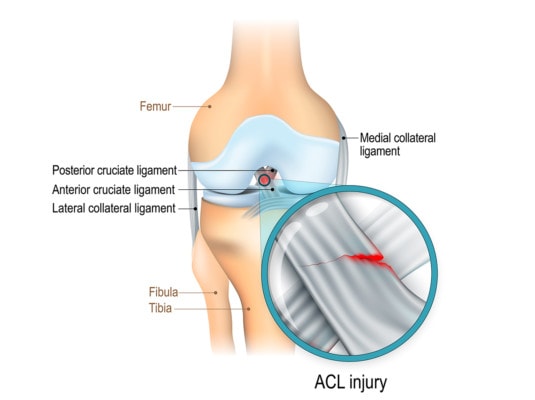Being Confident in Your ACL Repair May Not Be a Good Thing

Designua/Shutterstock
ACL reconstruction surgery is one of the most common orthopedic surgical techniques in use today. However, while most patients believe that getting a torn ACL “fixed” is just like getting a bad part in your car replaced, the truth is a bit more complicated. Now a new study shows that athletes with high confidence in how well their ACL repair worked are much more likely to have a tragic result. Let’s dig in.
ACL Reconstruction
The ACL is one of the main stabilizers of the inside of the knee. It controls the movement between the thigh bone (femur) and the leg bone (tibia). It can get torn and often these days, that results in an ACL reconstruction surgery. That means that the surgeon takes out the damaged ligament, drills holes, and then inserts a tendon to try to take the place of a ligament.
The surgery has loads of issues that I have blogged on before:
- The new ACL “ligament” doesn’t have normal position sense
- The procedure causes a severe second hit to the cartilage
- ACL surgery doesn’t prevent the onset of arthritis
- Teens who get ACL surgery are likely to have arthritis by age 30
Retears of the new ACL are also a big problem. A recent study sought to see who was more likely to get a retear of the ACL.
Is Confidence a Problem?
Are athletes who have high confidence that their ACL is just fine more or less likely to retear their ACL? A recent US study measured an athletes’ confidence in the surgical repair and then cleared the athlete for play using rigorous criteria.
Those who were confident that they could return were two and a half times more likely to tear their ACL compared to people without that confidence. If the confident player also met all of the rigorous return to sport criteria that the authors used, they were TEN times more likely to retear their ACL versus players who weren’t confident, but still met all of the return to sports criteria.
What to Do?
Why are confident athletes retearing their reconstructed ACLs at such an alarming rate? The authors weren’t sure, but many of the reasons above like the fact that the new ligament has no position sense combined with no common sense on the part of the athlete may spell disaster. Hence, educating athletes that they have a ligament that isn’t as good as the original equipment is key.
Is There a Better Way?
We’ve been treating 2/3rds of the ACL tears that surgeons operate on with a precise x-ray guided injection of bone marrow concentrate for years and have published several papers on this technique. We have saved hundreds of athletes from ACL reconstruction with retear rates that, based on what we have measured, are lower than surgery. Check out the procedure here:
Check out before and after MRI images of ACL ligaments treated using this technique.
The upshot? This study demonstrates what we’ve been saying for years. The ACL you’re left with after surgery is nowhere near as good as the original equipment. So see if you’re a candidate to keep your original ACL today!
_______________________________________
References:
(1) Paterno MV, Thomas S, VanEtten KT, Schmitt LC. Confidence, ability to meet return to sport criteria, and second ACL injury risk associations after ACL-reconstruction. J Orthop Res. 2021 Apr 30. doi: 10.1002/jor.25071. Epub ahead of print. PMID: 33930209.

If you have questions or comments about this blog post, please email us at [email protected]
NOTE: This blog post provides general information to help the reader better understand regenerative medicine, musculoskeletal health, and related subjects. All content provided in this blog, website, or any linked materials, including text, graphics, images, patient profiles, outcomes, and information, are not intended and should not be considered or used as a substitute for medical advice, diagnosis, or treatment. Please always consult with a professional and certified healthcare provider to discuss if a treatment is right for you.
